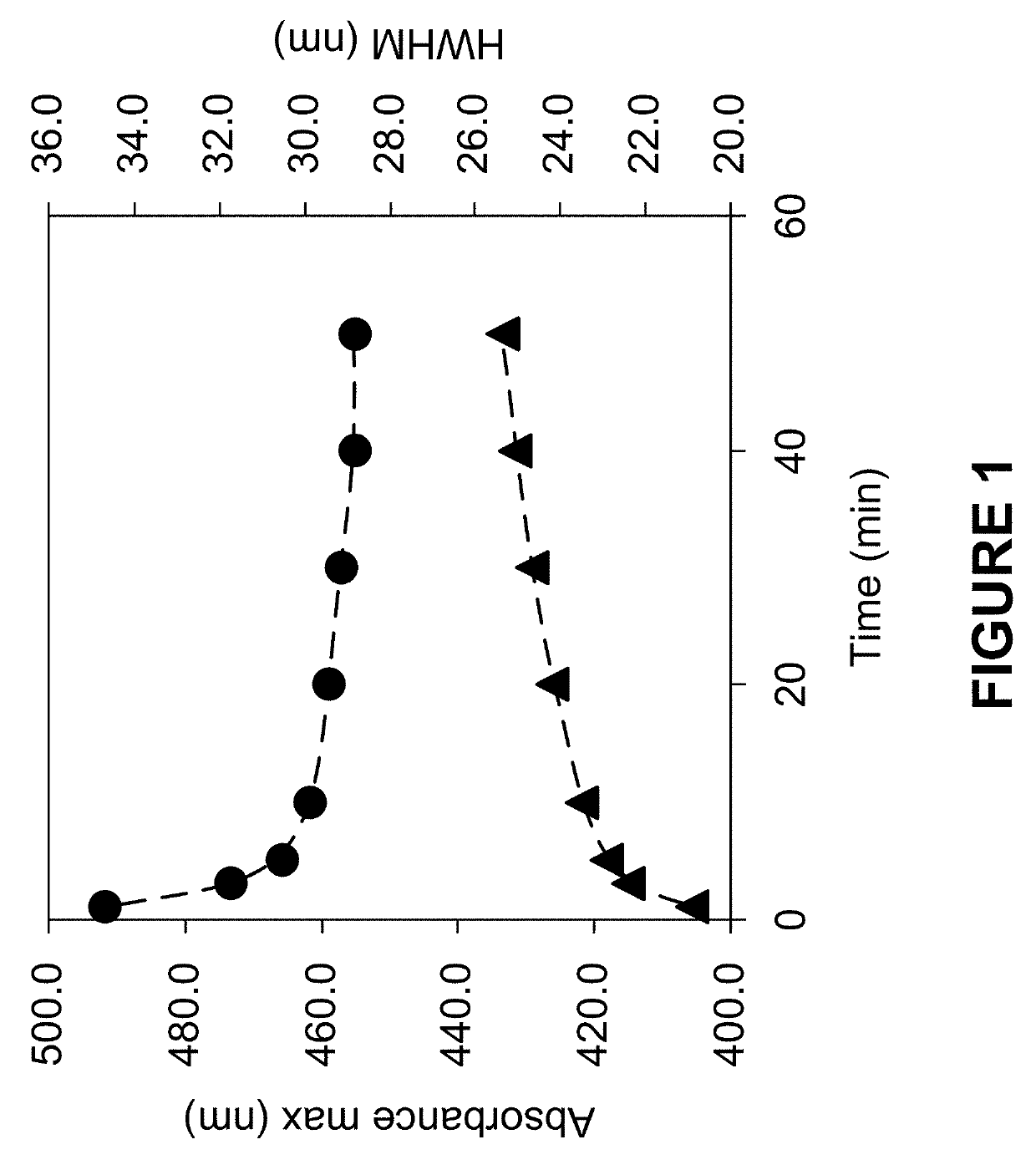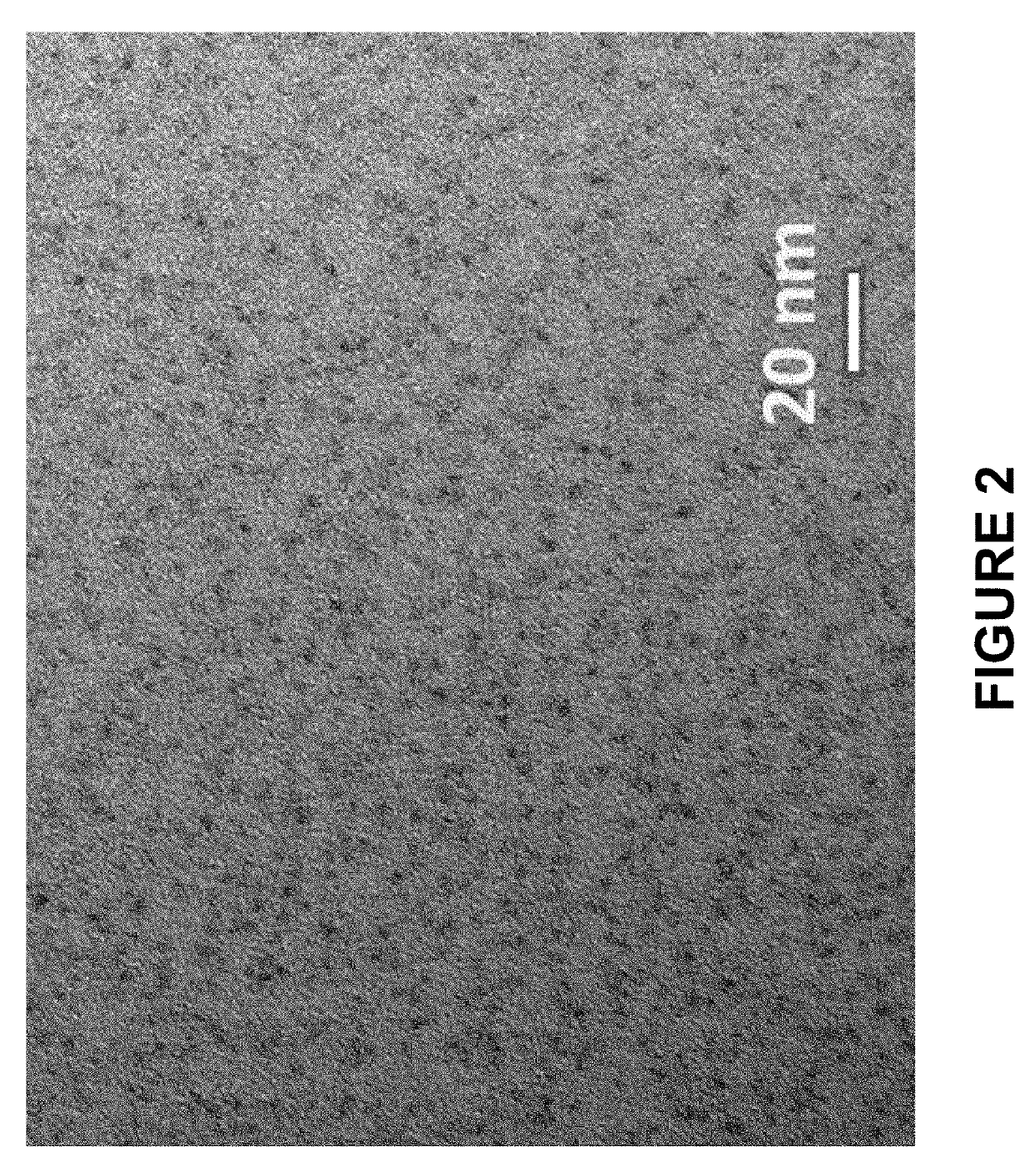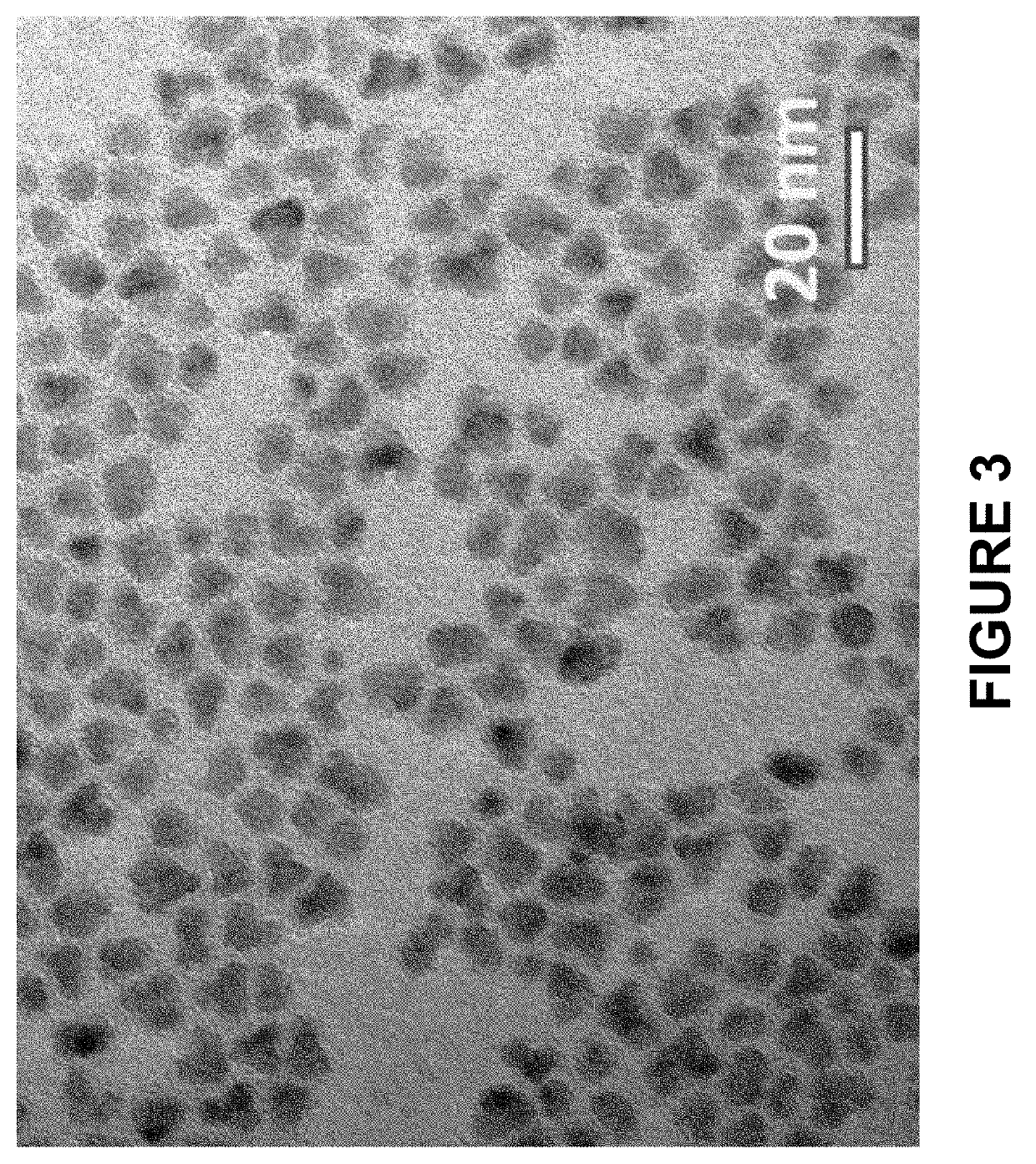Decreased Photon Reabsorption in Emissive Quantum Dots
a quantum dots and reabsorption technology, applied in the field of nanostructure synthesis, can solve the problems of reduced photoconversion efficiency, undesirable red shift in peak emission wavelength (pwl), and limited method, and achieve long photoluminescence lifetimes
- Summary
- Abstract
- Description
- Claims
- Application Information
AI Technical Summary
Benefits of technology
Problems solved by technology
Method used
Image
Examples
example 1
Preparation of an InP / ZnS / ZnSe / ZnS (1 Equivalent Inner Shell)
[0225]InP / ZnS core / inner thin shell nanostructures with 1 equivalent of inner ZnS shell were made by combining indium myristate (0.4 mmol), zinc oleate (0.4 mmol), dodecanethiol (0.4 mmol), and tris(trimethylsilyl)phosphine (0.4 mmol) in octadecene (32 mL). All materials were degassed under vacuum at room temperature and heated to 300° C. under an N2 atmosphere. Reaction progress was tracked by removing small aliquots and monitoring the UV-vis absorbance spectra. The reaction was stopped when the absorbance maximum (as shown in FIG. 1) was >430 nm by removing the heat source from the reaction. Once cooled to room temperature, the InP / ZnS core / inner thin shell nanostructure was precipitated with one volume of acetone and dispersed as the isolated material in hexane (5 mL). Transmission electron micrographs of the isolated InP / ZnS core / inner thin shell nanostructures are shown in FIG. 2. The reaction was scaled ten-fold and ...
example 2
Preparation of an InP / ZnS / ZnSe / ZnS (0.5 Equivalent Thin Shell)
[0228]InP / ZnS core / inner thin shell nanostructures with 0.5 equivalents of thin ZnS shell were made by combining indium myristate (0.4 mmol), zinc oleate (0.4 mmol), dodecanethiol (0.2 mmol), and tris(trimethylsilyl)phosphine (0.4 mmol) in octadecene (32 mL). All materials were degassed under vacuum at room temperature and heated to 300° C. under an N2 atmosphere. Reaction progress was tracked by removing small aliquots and monitoring the UV-vis absorbance spectra. The reaction was stopped when the absorbance maximum was >435 nm by removing the heat source from the reaction. Once cooled to room temperature, the InP / ZnS core / inner thin shell nanostructure was precipitated with one volume of acetone and dispersed as the isolated material in hexane (5 mL).
[0229]Further ZnSe and ZnS outer layers were grown as a secondary reaction on the isolated InP / ZnS core / inner thin shell nanostructure. Zinc oleate (6.2 mmol), lauric acid ...
example 3
Preparation of InP / ZnS Core / Inner Thin Shell Alternative Method
[0230]The effects of introducing a wide-band gap inner ZnS shell may also be observed following the growth of an thin ZnS shell in a secondary reaction on isolated and purified InP cores. Zinc oleate (5.4 mmol), lauric acid (5.4 mmol), and octadecene (11 mL) were combined in a flask. The reaction flask and contents were degassed under vacuum at room temperature and then heated under an N2 atmosphere. Isolated InP cores (0.14 mmol InP) were added when the temperature was between 85-145° C. A low-temperature reactive sulfur-precursor (equivalent amount to form 1 monolayer of ZnS) was added to the reaction flask. Following the formation of the inner thin ZnS shell layer, subsequent ZnSe and ZnS shell layers were grown as described in Example 1 via the addition of trioctylphosphine selenide and dodecanethiol in amounts equivalent to form 0-2.0 monolayers of ZnSe and 0-2.0 monolayers of ZnS. The final product was isolated by ...
PUM
| Property | Measurement | Unit |
|---|---|---|
| thickness | aaaaa | aaaaa |
| thickness | aaaaa | aaaaa |
| thickness | aaaaa | aaaaa |
Abstract
Description
Claims
Application Information
 Login to View More
Login to View More - R&D
- Intellectual Property
- Life Sciences
- Materials
- Tech Scout
- Unparalleled Data Quality
- Higher Quality Content
- 60% Fewer Hallucinations
Browse by: Latest US Patents, China's latest patents, Technical Efficacy Thesaurus, Application Domain, Technology Topic, Popular Technical Reports.
© 2025 PatSnap. All rights reserved.Legal|Privacy policy|Modern Slavery Act Transparency Statement|Sitemap|About US| Contact US: help@patsnap.com



